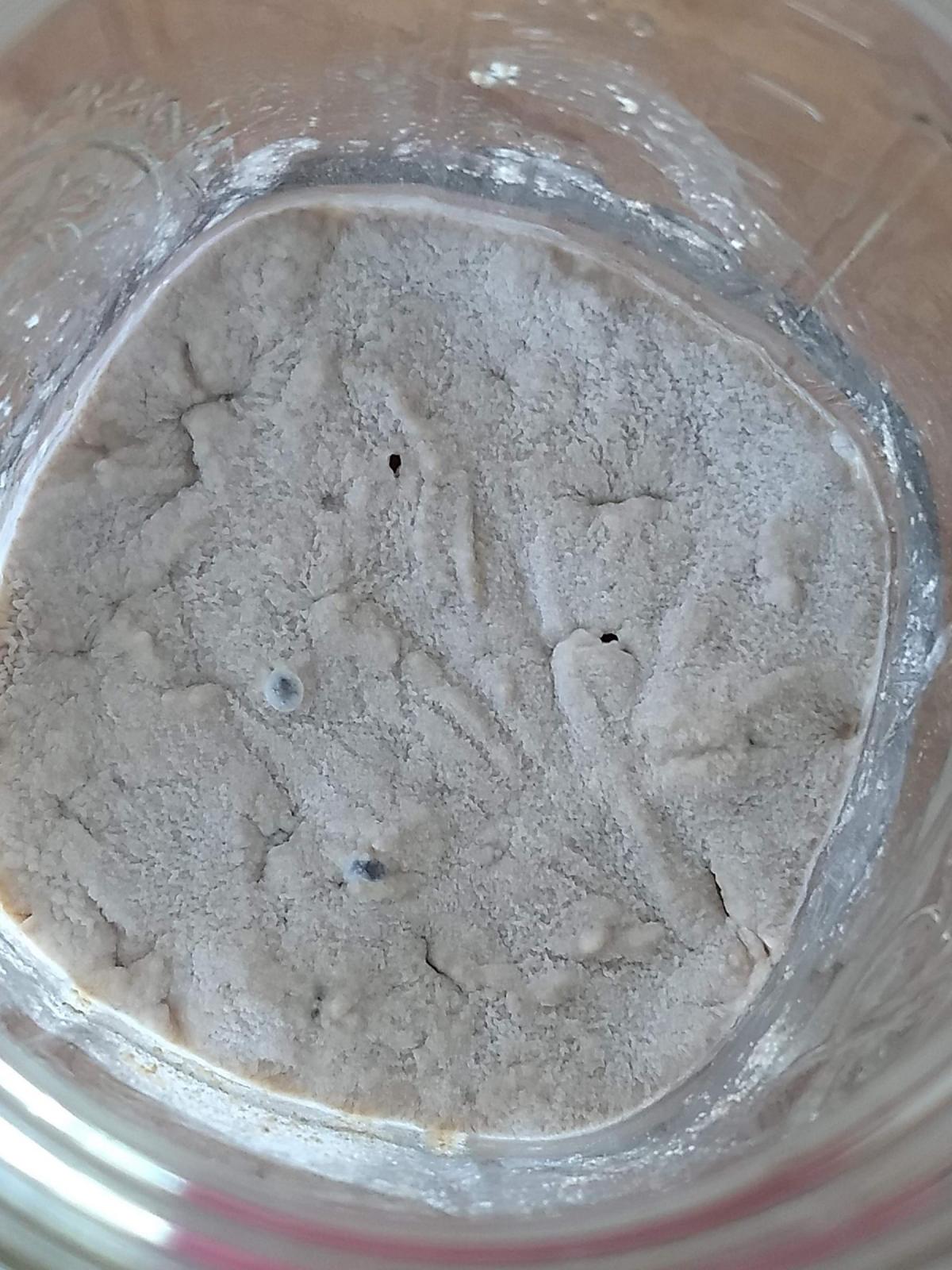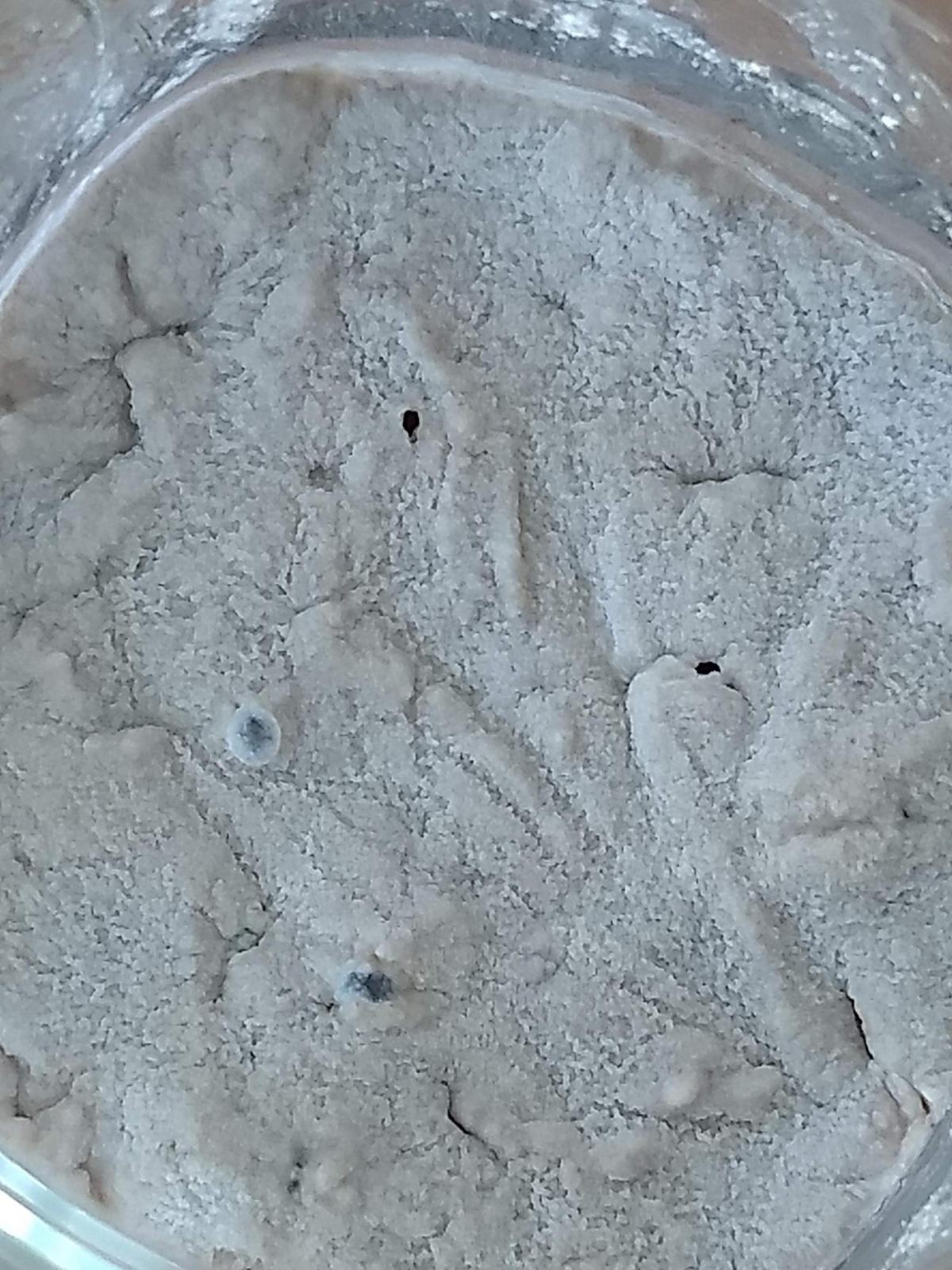Hi all,
I need some help determining if the mold as seen in the pictures is normal or I have to discard the starter and start fresh.
Some background - the starter is about 5 years old, 100% whole wheat, 100% hydration.
I keep it in the fridge and feed it once a week. During the feeding, most of the starter is discarded (leave about 30g), then add 80g of water and 80g, mix well and store back in the fridge.
I tried several times to scoop up the mold from the top, carefully get a fresh starter from the middle hoping there will be no mold, and transfer it to a new jar. Unfortunately the next week the mold is back in the new jar.
In addition, I tried to keep the started outside and feed it daily for a week. That did not help. The white/grey mold on top kept returning after it stays in the fridge for a week.
Despite the mold issue, the starter seems quite active and usually triples its volume after it is fed before backing.
I usually get a good rise and the bread is delicious.
Havings said all that, I need some help determining if the mold as shown on the images is a problem and if I should be worrying about it or it is normal. If it is an issue, is the starter salvageable, or I should start fresh.
I would love to hear some expert opinions!
Thank you for your help!
Regards
Here are the images:


A bit hard to tell in these pictures, by mold do you mean the smaller blue-ish spots? Is they actually are blue, it's mold, and you should through everything away, you can't just skim it off.
However, if those spots are just an artifact of the photo, and you mean the whole white-ish surface of the starter, to me it looks like kahm yeast, which harmless.
Thank you for your reply!
It's mold, and not much to worry about, as it should be an easy fix. Take a very small amount of starter, feed 1,25,25, keep warm and stir a few times a day. Don't feed until it stops rising. It'll be back to normal in a few days. Enjoy!
Thank you! I will give it a try.
What is 1, 25, 25?
Appreciate the response.
Mold is tough to get rid of but it can be done. Often, the mold takes a deep dive below the level where it is visible.
Sterilize a jar and lid in boiling water for 10 minutes. Put a jar & lid in a pot of cold water covering, bring to boil and boil,covered,10 minutes. Remove the jar with a newly washed utensil and allow to cool before filling.
Wash hands thoroughly before handling and wash a few times during the process (for example, after digging out the sample from the bottom of the jar and placing in the bottom of the newly cleaned/cooled jar-wash hands before continuing).
Take a sample from the bottom of the starter but use several clean spoons to do so-1 spoon to scrape the top away, 1 spoon to obtain the sample and another spoon to scrape the sample into the clean jar (do not use your finger for this).
Add your water and flour,stir with clean spoon, push sides down, cover so it does not dry out.
Wait.
At next feeding, if there is mold present, do the same drill.
Wait
If after this second feeding there is mold present then there may be no hope-the mold had deep tendrils into the sample and cannot be "washed" out. Either live with it or discard.
How deep is the starter bowl in the pic? It looks like a shallow bowl that is uncovered-the top looks dried. Is that accurate? Hard to tell on this pic. Best to keep the starter covered so it doesn't dry out and deeper so there is not as much surface area.
Most molds are not harmful and it may have come from another "culture" in your refrig or home-cheese,yogurt, etc. Or it can come from you-we are all generally walking cultures.
Thank you for taking the time to write such detailed advice!
I did try everything and unfortunately, the mold came back each time.
I guess I will have to live with it.
If you decide to try to rescue this starter, you could also begin the process of starting a new one. If your old one is able to be rescued, you can just use the new one until it's gone. If the rescue attempt doesn't work out, you will have a new starter ready without having to wait longer.
Caution, if you decide to start a new one, take extra care so it doesn't get contaminated with mold from your existing starter. Do not use any of the same containers/utensils you used on the old one.
And mariana mentioned a very interesting website in another thread that you could also explore. This site has some really interesting starter cultures.
Good luck!!
Edit: You might also consider looking at ways to preserve a healthy starter, in case you need it. There are several ways (google it), including drying. I have some of mine saved this way. Best wishes!
Thank you for your advice as well and for sharing the ways to preserve the starter for longer periods with no feeding!
Based on the posts here it seems as there is no harm from the light grey mold - healthwise.
The starter is at least 6 years old, and it is performing well despite the mold - usually doubles and sometimes almost triples. Last but not least, I feel "attached" to it :) so I decided to keep using it for now.
Thank you for your help!